| Early Spring Date: | April 26 |
| Late Spring Date: | May 31 |
| Best Dates to See in Spring: | May 3-25 |
Spring: Monticello Park is one of the easiest places to find Magnolia Warblers in the Washington metro area. They are common at the park during the second and third weeks in May. They breed in Canada, the northern United States, and the Appalachian Mountains.
Fall: Quite a few Magnolia Warblers pass through Monticello each fall. The greatest numbers have been recorded from the second week in September through the beginning of October.
Where to See Them in the Park
Magnolia Warblers usually forage in the mid-story. A good place to find them is on the knoll near the yard with the azaleas. They frequently go into the stream to bathe and drink.
Physical Description
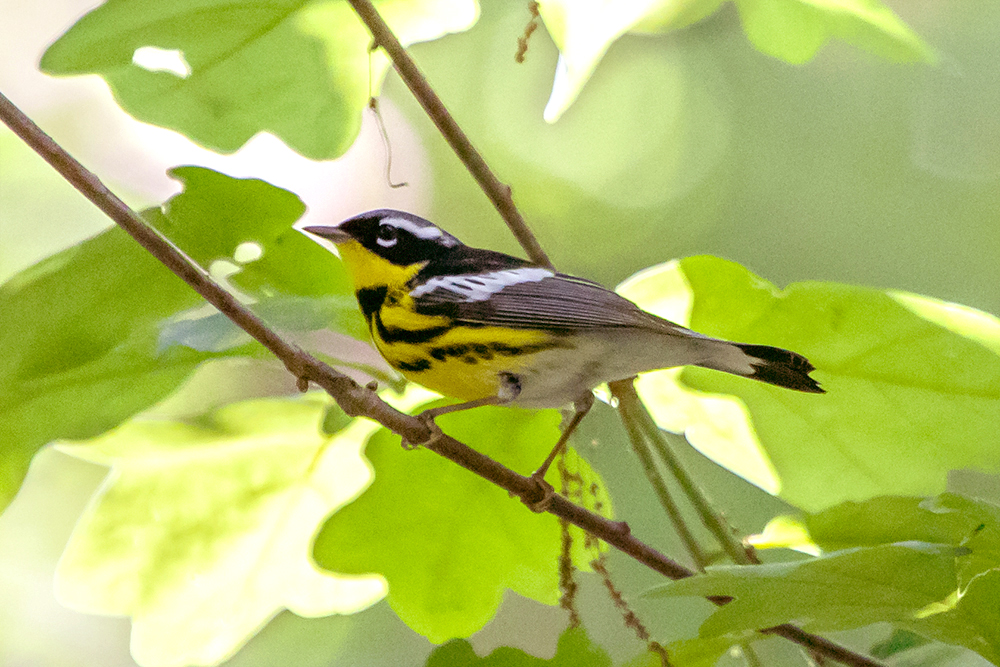
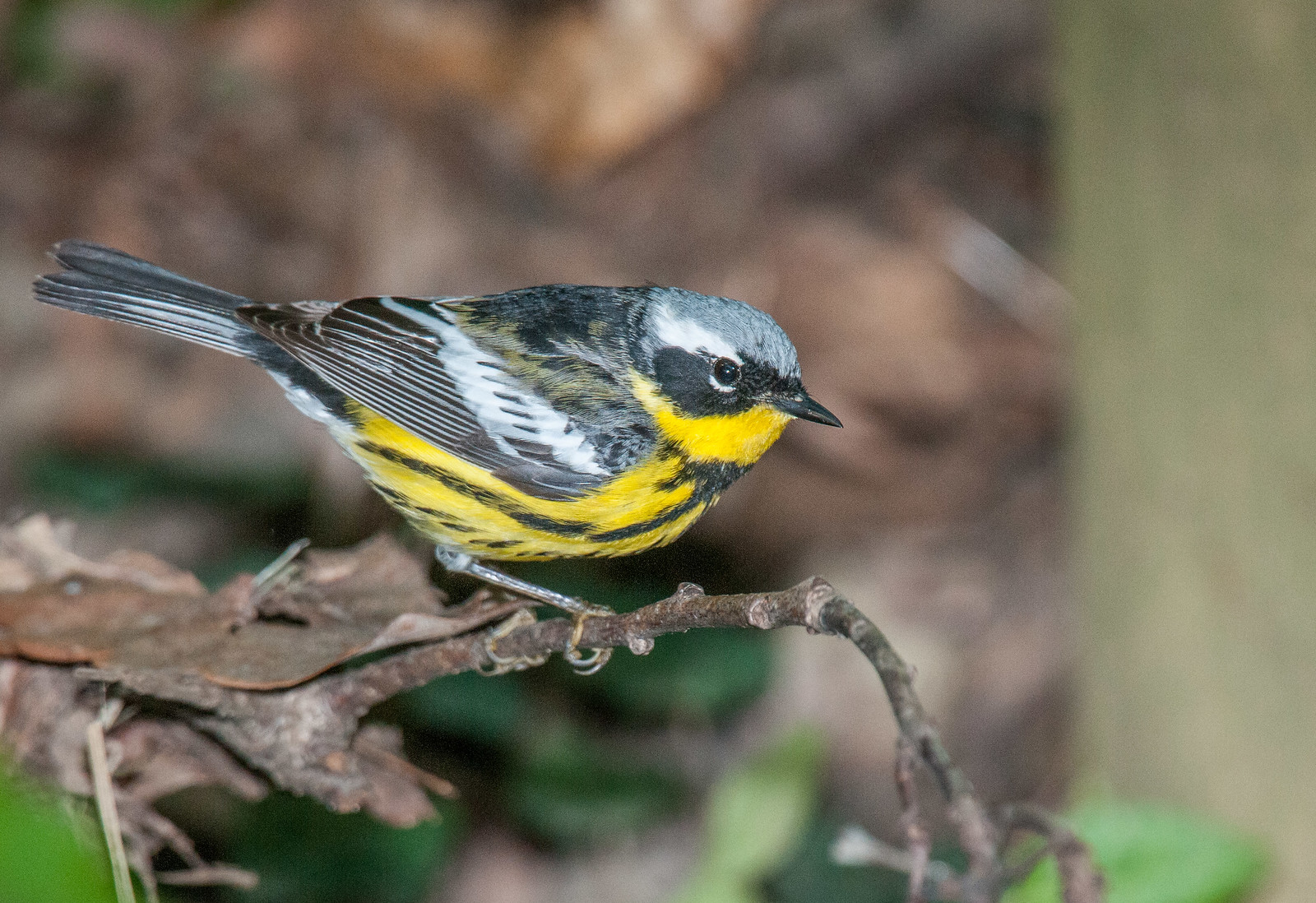
The male Magnolia Warbler has bright yellow underparts, heavy black breast markings, and a white wing patch. He also has a gray crown, a black mask, a flared white eyebrow, and a white crescent below the eye. Magnolia Warblers seem to have poor posture. Rather than standing straight up on a branch, they often slouch forward with their breast almost touching the branch.
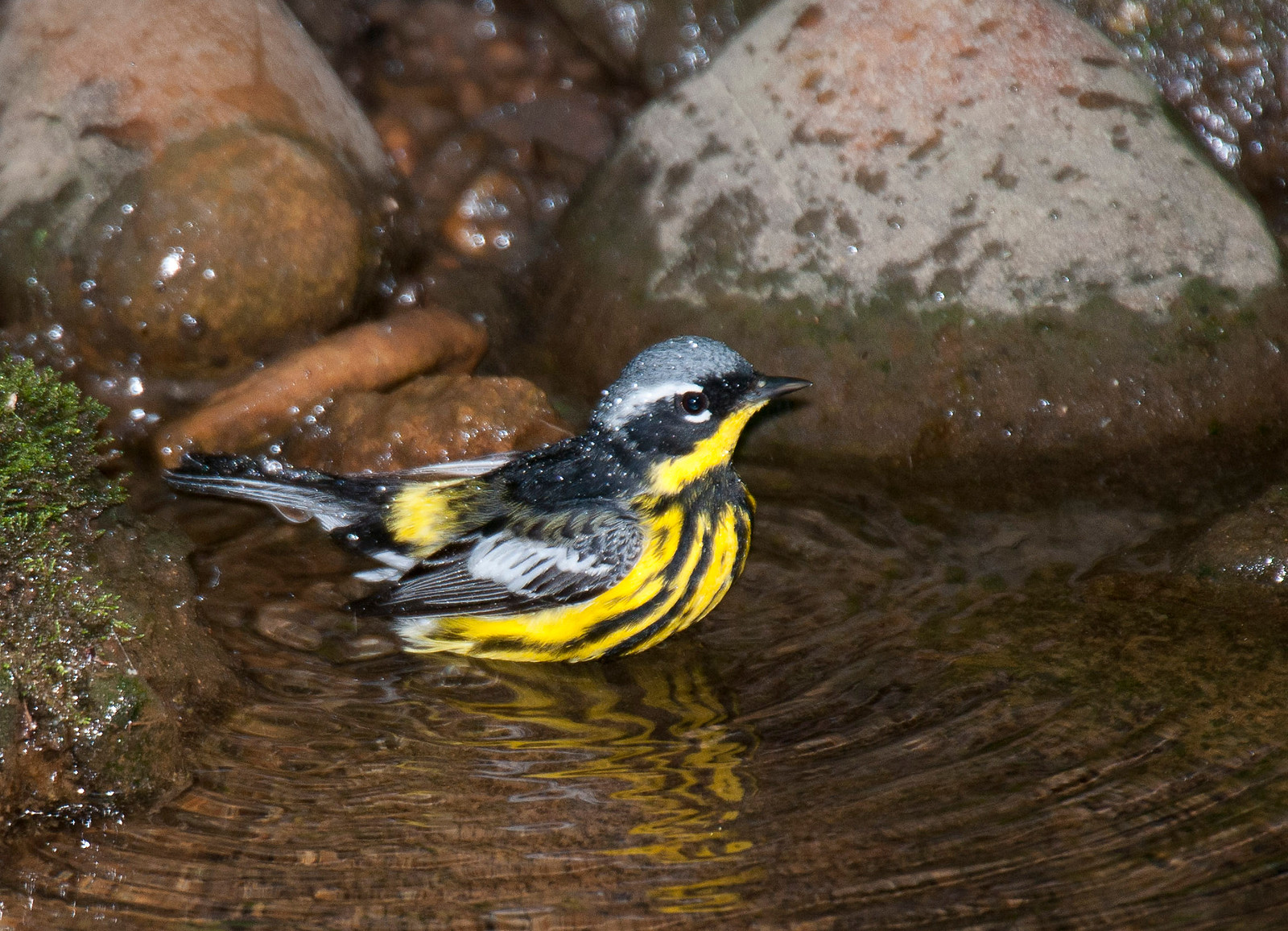
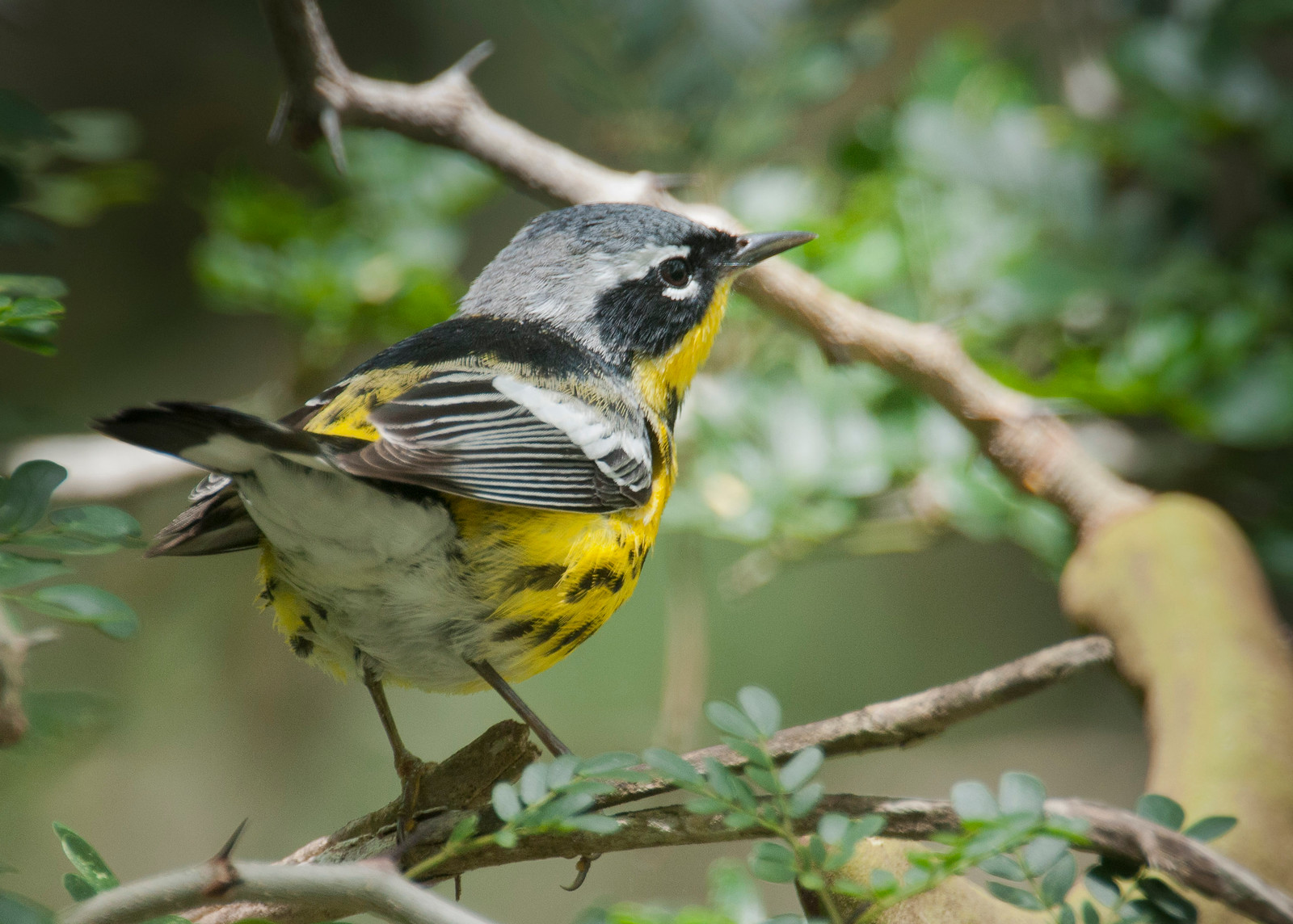
Magnolias are "yellow-rumped warblers", and their undertail is white.
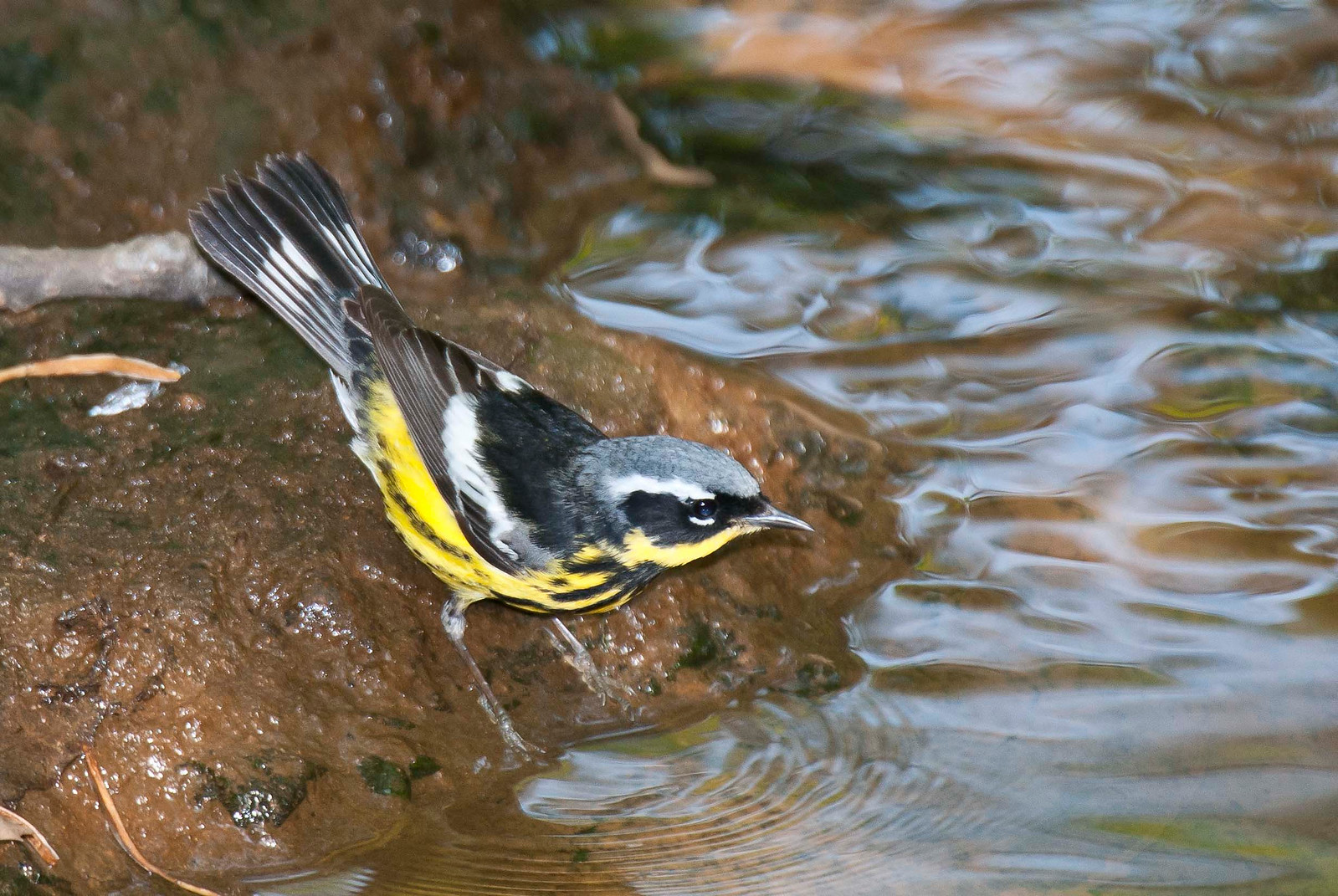
They move quickly, often flashing their tail like a redstart. The spread tail reveals white marks on the black feathers.
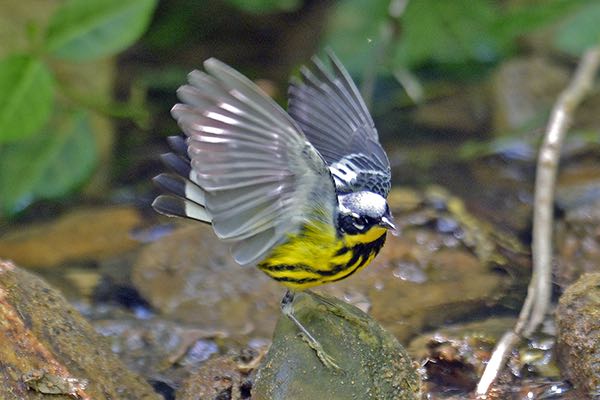
Magnolia Warblers also have white in their wings, which can be seen when the wings are raised. Some species with white in their wings flash it when foraging. The sudden flash of white can startle an insect and make it easier to see and catch.
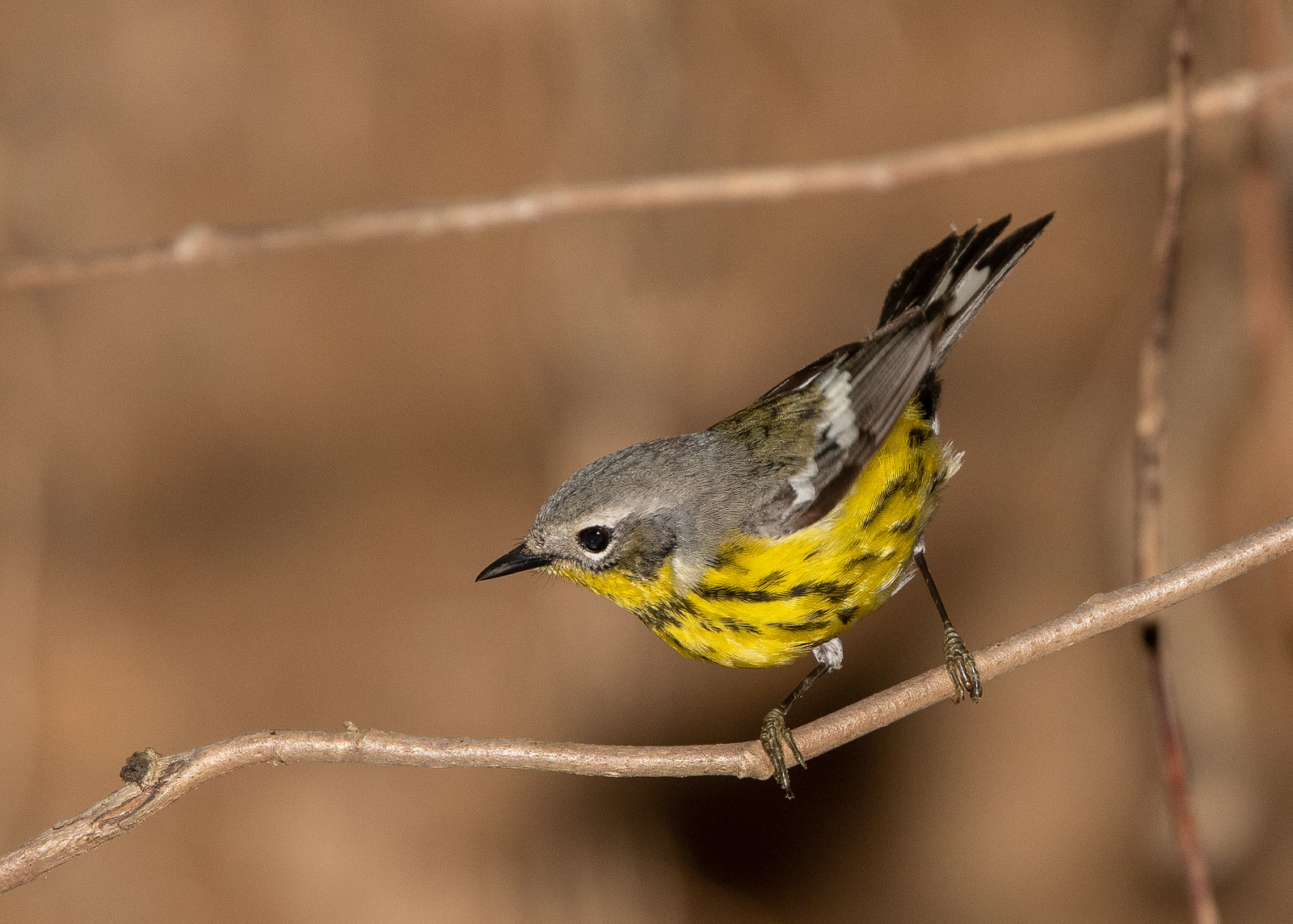
The plumage of the female is not as striking. The marks on her breast are not as heavy, the white eyeline is not as pronounced, and she has wingbars instead of a white wing patch. Like the male, she slouches with her breast near the branch. It is not always possible to separate females from males.
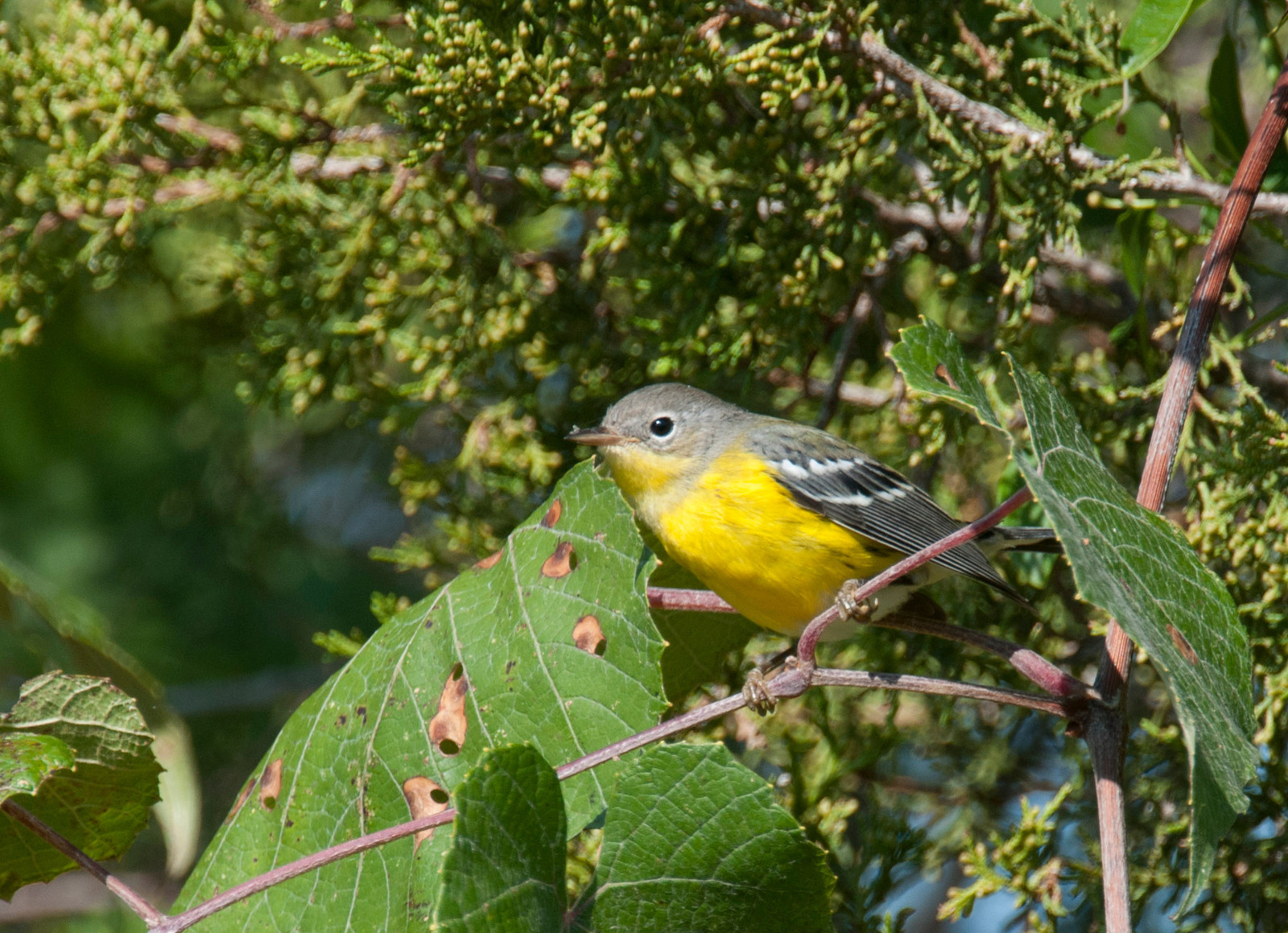
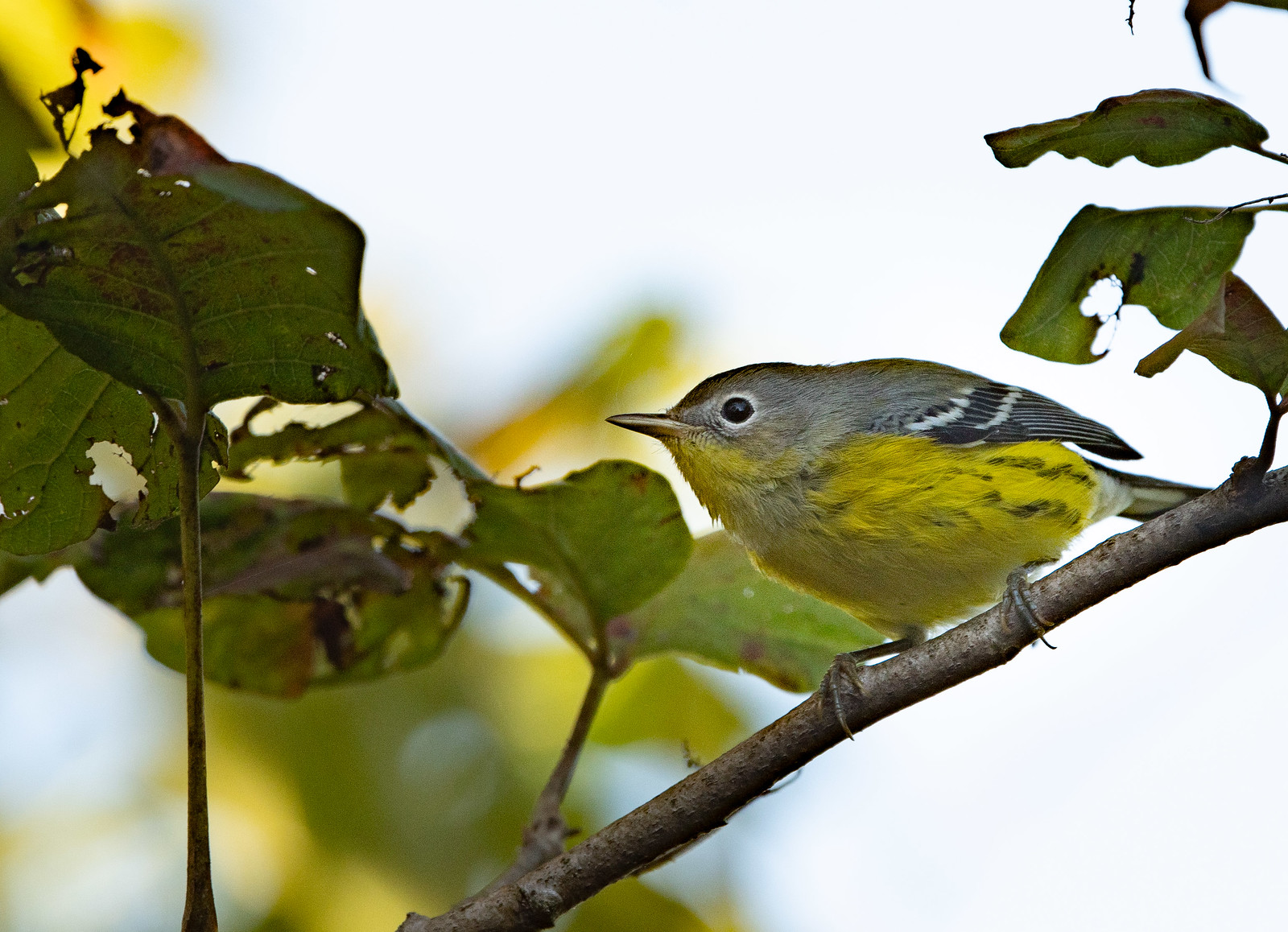
Fall: Most fall Magnolia Warblers look alike, regardless of sex or age. They have a gray head, a white eyering, a gray breastband, two white wingbars, and some faint streaking on the flanks. On some birds, the flank streaking is heavier, while on others, it is barely visible.
Vocalizations
The Magnolia's song suggests a local public broadcasting station — weta-weta-WETA, with the third part stressed more than the first two. It often sounds like a truncated version of the Chestnut-sided Warbler's song. The Magnolia's song also can sound like the I-wanna-renta-video song of the Hooded Warbler.
Hear the vocalizations of the Magnolia Warbler.Notes
An eponym is a person after whom something has been named. Botany has a lot of eponyms. Dahlias are named after the Swedish botanist Anders Dahl, Forsythias after the Scottish botanist William Forsyth, and Gardenias after the Scottish botanist Alexander Garden. The Magnolia Warbler, who does not show any preference for magnolia trees, got its name because the 19th century ornithologist Alexander Wilson shot one in a magnolia. The magnolia tree is named after the French botanist Pierre Magnol.
Origin of Names
Common Names: Magnolia because the first specimen was shot in a magnolia tree. The New World Warblers were named for their similar appearance to European warblers, to whom they are not related. Most of the New World warblers do not warble (sing continuously with notes that change frequently).
Genus Name: Setophaga means moth eating.
Species Name: Magnolia from the tree in which the first specimen was shot.
Magnolia Warbler video footage
Return to the Index
